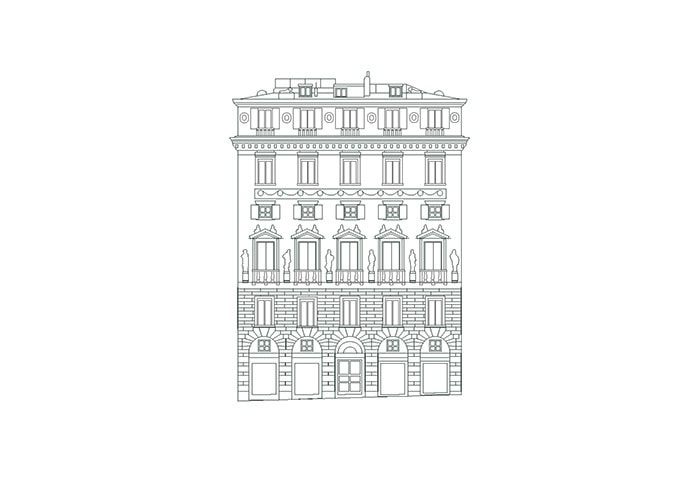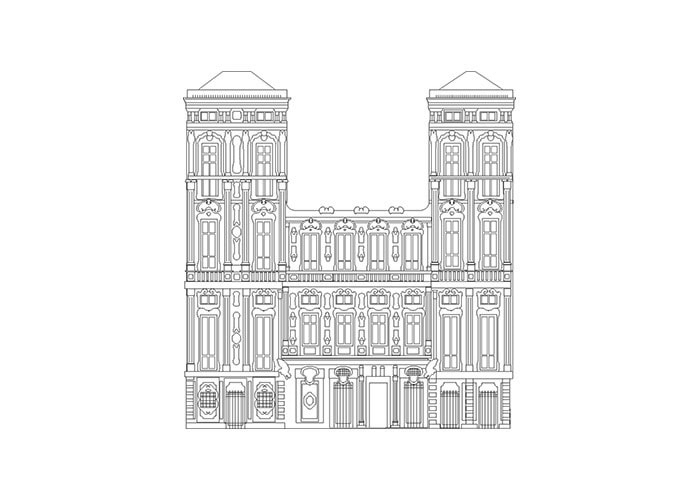
34. Palace of Cipriano Pallavicini
25 March 2022
36. Palace of Francesco Grimaldi
25 March 2022Rising from the earlier medieval Palazzo Centurione and Palazzo Gentile, the palace shows the marks of a number of projects commissioned by Nicoló Spinola and his successors undertaken between the later half of the 16th century and the first decades of the 17th.
In the 1588, the residence was included in the rolls under the name of Gio.Battista Spinola, ambassador to Spain and active promoter of the renewal of Piazza Banchi. The building is distinguished by the elaborate façade built by Ottavio Semino and Gio.Andrea Ansaldo (1610), whose frescoes dedicated to “Epic histories and allegories” must have increased the feeling of space in the narrow way.
The palace is very narrow and had to contend with an unusually long layout in which every room was also the corridor to the next. Despite this, the house still boasted a tipically hall and stairway which climbs to the second floor, and all the usual rooms, ante-chambers, and small and large drawing rooms of the latest lifestyle.
The portal was built by Valsoldo with herms ans volutes and echoes the style which Bergamasco had introduced into his doorway at Salita Santa Caterina.
In the 19th century, the residence belonged to Senator Agostino Maglione, a member of the active Enlightened bourgeoise, whose descendants were responsible for restructuting it and dividing it into apartments which have chenged its 16th century aspect and original vertical layout.
Joint after the war to a building which gave on to Piazza Pinelli, it passed into the hands of the Pio Lascito Picasso.
Updated bibliography post 1998
E. Poleggi, Genova. Una civiltà di Palazzi, Cinisello Balsamo (Milano) 2002, pp. 93-94 (Palazzo di Nicola e Gio Batta Spinola (1557-1607)
The texts have been updated thanks to the INSIDE STORIES project financed with funds - Law no. 77 of 20 February 2006 "Special measures for the protection and enjoyment of Italian sites of cultural, landscape and environmental interest, included in the "World Heritage List", under the protection of UNESCO.



